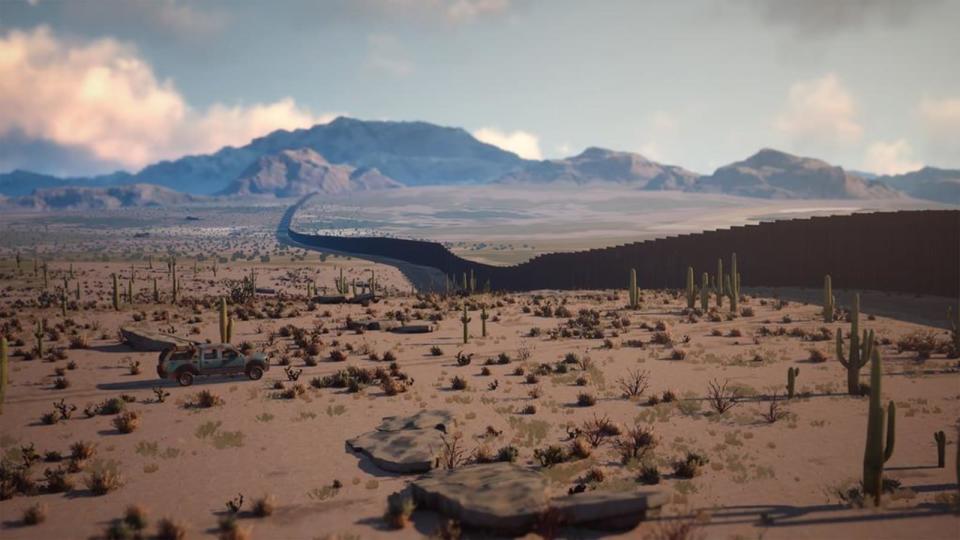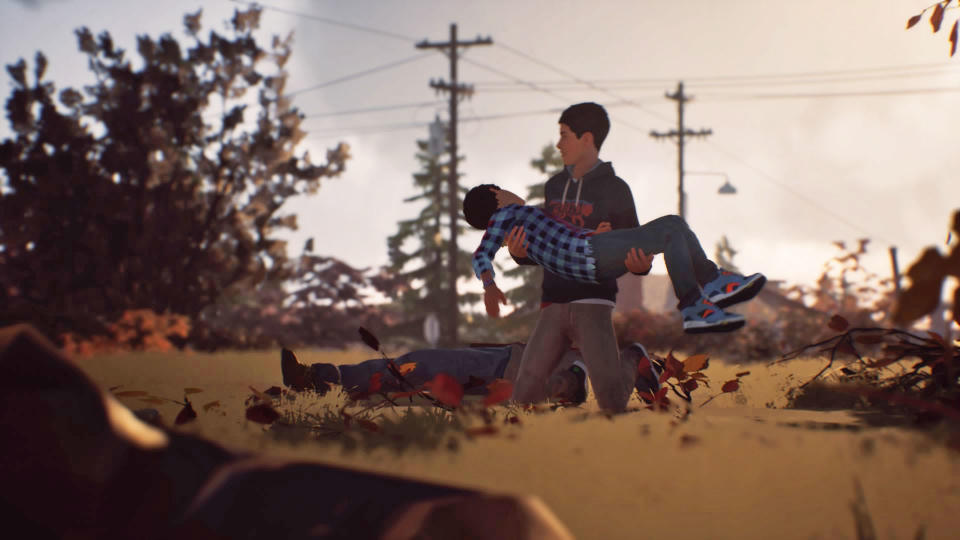'Life is Strange 2' and the reality of gun violence in games
Life is Strange isn't a first-person shooter, but guns play a big role.
Life is Strange 2 deals with a litany of heavy themes, covering everything from police violence and immigration in the United States, to racism and family bonds. French studio Dontnod handles each subject with care, respect and research, consulting with people who have lived through situations that the game's main characters, Sean and Daniel, encounter.
However, there's an extra, unintentional topic humming beneath the five-part series: gun violence. Throughout Life is Strange 2, moments of high drama often culminate in scenes involving guns, asking players to make quick decisions at the threat of being blown away -- or, pulling the trigger themselves.
"We have a lot of issues with violence also in France, even if it's not exactly the same relationship to guns in other countries," Life is Strange co-director Michel Koch said. "But it's definitely a topic that's quite universal in a lot of different parts of the world. I think it was important for us to definitely not trivialize the weapon -- I mean, a gun is a weapon that is really dangerous and it was important for us to show that."
In Life is Strange 2, Mexican-American brothers Sean (16) and Daniel (9) Diaz are forced to flee their home in Seattle after their father is shot and killed, for no reason, by a white police officer on their front lawn. Daniel has explosive supernatural powers, and in a moment of grief and shock as his father dies, he lets loose a massive shockwave, unintentionally destroying the neighborhood and killing the police officer. With their mother out of the picture, the boys decide to make their way to Mexico, where their dad's family still lives.
"We wanted to show that our world is a violent world."
- Cano
It's not an easy journey. Along the way, Sean and Daniel must not only survive the elements on their own, but they also run into conniving adults, reckless teenagers and racist idiots. Some of the older, majority white people along their path hurl insults at the boys, saying things like, "You're the reason we need to build that wall" while kicking Sean in the face, or telling a pregnant Mexican woman, "You and your unborn parasite have nothing in common with me and my family."
Many of these adults end up holding the Diaz boys at gunpoint. Some of them are law enforcement, while others are citizens, but the threat of imminent, bullet-based violence remains the same.
"It was maybe something subconscious," series writer Jean-Luc Cano said. "We did it without thinking about it because we wanted to show that our world is a violent world. And we wanted to create a real bond between the two brothers and to have something like, it's you and me versus the world."

Dontnod developers didn't make it a point to infuse Life is Strange 2 with a message about gun violence. Instead, the ever-present threat is a result of their research. The team traveled for two weeks across the United States talking to drifters, hitchhikers and everyday folks, and then rolled those stories into the game. Guns are simply a part of the real world, so they're also in the game's reality.
"After just talking with them, hearing some of their stories, we knew that it was important for us to talk about some of the things they told us just because it felt real," Koch said. "It was important for us to somehow talk about those people that were maybe not represented enough in video games."
Guns are a staple of the video game industry. Shooting is by far the most popular mechanic around, especially when it comes to multi-million-dollar AAA games. Best-selling franchises like Call of Duty, Battlefield, Counter-Strike, Grand Theft Auto and Red Dead Redemption are built around the idea of shooting enemies and customizing an arsenal of high-powered firearms. In any given year, it's far easier to list the games that don't feature guns than the ones that do.

"We also don't want to be the French guy who gives lessons to everyone."
- Cano
Life is Strange is a narrative-driven series, offering players decisions and dialogue options as the story plays out. The first game focuses on Max and Chloe, two high school girls navigating a complicated friendship while supernatural forces invade their seaside town. This isn't a pew-pew kind of franchise, but guns are a factor in both games.
"When a gun was involved or even, for example, the death of someone in Life is Strange 1, it's rare compared to Life is Strange 2," Koch said. "This is a lot of discussion we had, to not trivialize the presence of guns and violence links to them. And yeah, to show that it has some consequences."
In Life is Strange 2, guns are a shortcut to high-stakes drama. They're a known factor, something that developers can add to the story and instantly create tension or force a gut decision out of players.
"It's about making a game and telling good stories," Cano said. "But this difficult stuff happened to people in real life, so we really took care to talk about this subject very consciously. We have done a lot of research to be as accurate as possible. We also don't want to be the French guy who gives lessons to everyone."

The fifth and final episode of Life is Strange 2 landed in December, and no matter which ending players receive, it tells a sensational, heartbreaking story. Part of its power stems from its foundation in real-world crises, tackling subjects like family separation, police brutality and violent racism. Though the franchise may rely on guns to manufacture tension like other titles, it tells stories often overlooked by the video game industry. Stories about young women coming of age and discovering their power, or that of two young brothers traversing the US on their own, relying only on each other to survive.
Cano, Koch and series co-director Raoul Barbet don't have any concrete plans for the next installment of Life is Strange, but they're brainstorming new game ideas now. Whatever they choose, it'll likely be character-driven, highly emotional and tied to the real world in a tangible way. It might also include guns -- but that could apply to basically any game.




